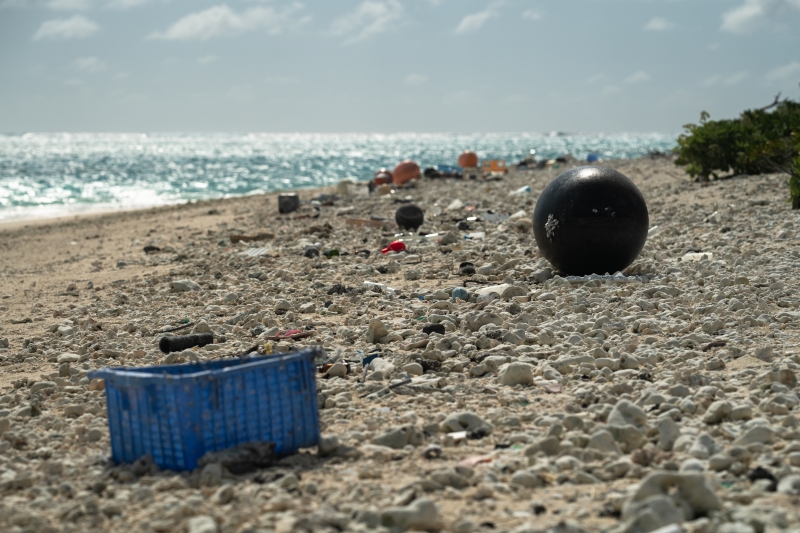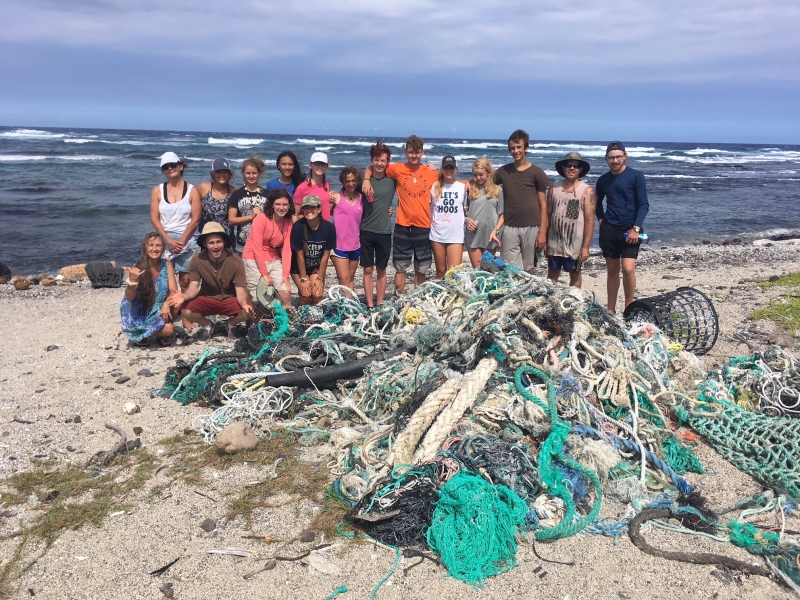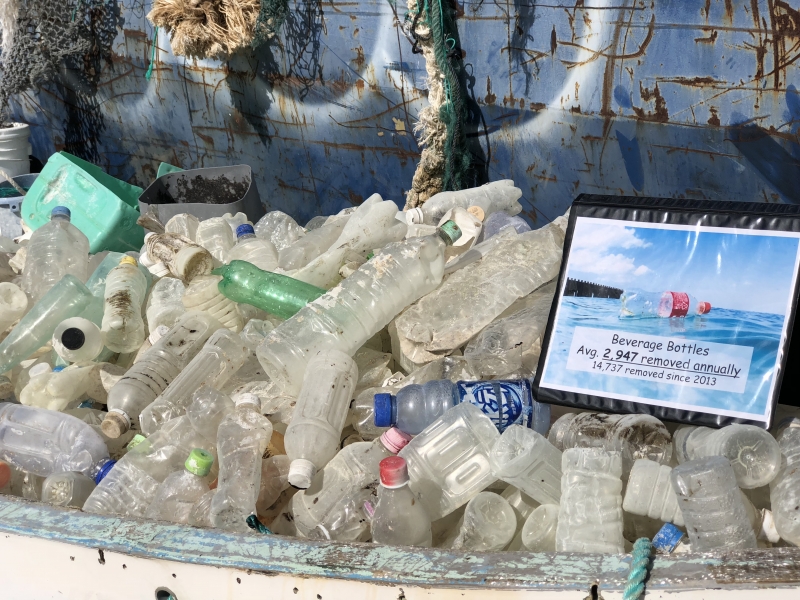
The Pacific Islands bring to mind some of the world’s most beautiful beaches, but many do not know it is also home to beaches that are overwhelmed with marine debris. Pacific Ocean currents carry marine debris from afar to these remote archipelagos, inundating even its uninhabited islands with massive amounts of trash. The NOAA Marine Debris Program’s (MDP) Pacific Islands Region includes the Hawaiian Islands, Guam, American Samoa, and the Commonwealth of the Northern Mariana Islands (CNMI).
For centuries, these Pacific Island communities have depended on the ocean for subsistence, cultural connections, and recreation. Marine debris threatens delicate coral reef and shoreline ecosystems, poses navigational hazards, and can introduce non-native and invasive species. Numerous species, such as sea turtles, seabirds, and marine mammals, are jeopardized by entanglement and ingestion risks. Impacts of debris on marine ecosystems and species in this region translate directly to effects on the culture and economy of these unique places. The MDP partners with local agencies, non-governmental organizations, fishermen, and coastal communities in the region that are working to address the complex and ever-growing issue of marine debris.

The MDP is currently supporting two new projects in Hawaii that tackle marine debris through community-based removal and prevention efforts. The Hawaiian Islands receive a high number of derelict fishing gear on its shores. Nets, buoys, lines, hard plastic floats, and many more items pose a huge risk to native wildlife. Hawai‘i Wildlife Fund and partners are taking a collaborative approach to remove derelict fishing gear and medium-to-large debris across the islands of Maui, Hawai‘i, Kaua‘i, and Lāna‘i. Through this project, Hawai‘i Wildlife Fund hopes to recover 75 metric tons of marine debris during its three-year duration.

Hawaii is also home to spectacular and heavily visited parks. Over 11 million residents and tourists visit Hawaii State Parks annually. In an effort to encourage the use of reusable bottles and the reduction of single-use bottles, the Department of Land and Natural Resources’ Division of State Parks is working to install water bottle filling stations across four islands in 15 parks. Their efforts also include educational signage and outreach materials to engage park users.
The Pacific Islands Region is fortunate to have dedicated groups and initiatives that are committed to addressing the issue of marine debris in Hawaii through education prevention, removal, and research efforts. To learn more about efforts such as these, check out the 2018 Hawai‘i Marine Debris Action Plan.

